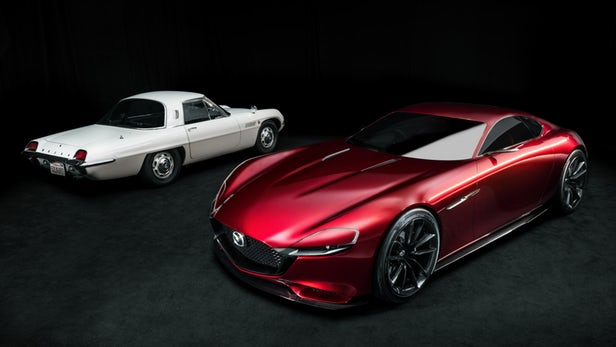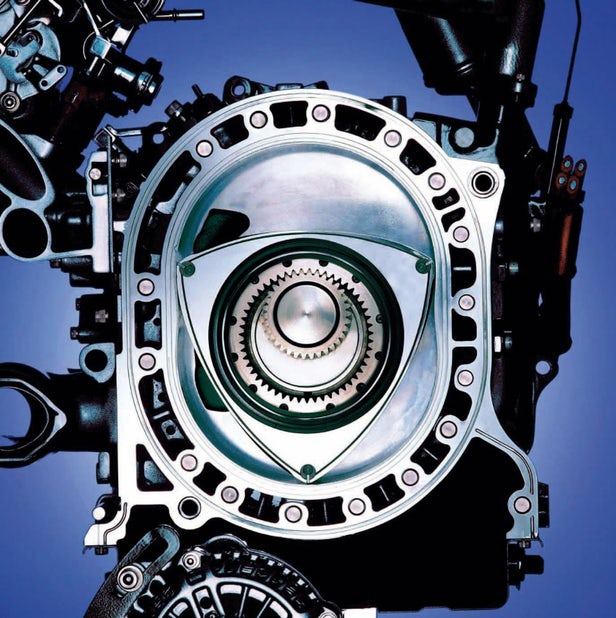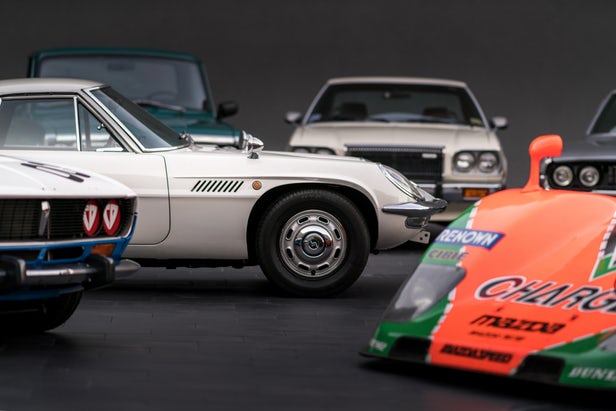Mazda celebrates 50 years of the rotary engine

Mazda is celebrating 50 years of the Wankel Rotary (Credit: Mazda)
Although it showed plenty of promise during development, the rotary engine was never widely used. Rotary (or Wankel) engines are renowned for smoothness, but they chew through fuel and lack torque compared to piston engines. In spite of these flaws, the technology enjoys a cult following thanks to Mazda and its range of rotary sports cars. Today marks 50 years since the Mazda Cosmo Sport 110S launched in Tokyo, and started a rotary love affair in the process.
The rotary engine design was dreamt up by engineer (and notorious Nazi) Felix Wankel, who saw it as a way to deliver exceptional smoothness and power from a small package. Essentially a Wankel engine has just two moving parts – a triangular rotor and an eccentric shaft, which is equivalent to the crankshaft on a piston engine. The combustion process spins the rotor around its (roughly) oval-shaped housing to drive the central shaft. The result is a compact, smooth, valveless engine – but also one that's thirsty and wears out relatively quickly.
Mazda – then known as Toyo Kogyo Corporation – was famed
for its trucks and micro cars in the '60s, but wanted to
differentiate itself from the crowd of Japanese manufacturers
gunning for the Western market with a new sports car. With that in
mind, it purchased the rights to the Wankel Rotary from NSU in 1962,
and set about refining it for production.
Having banked their survival on the Wankel, engineers in Hiroshima set about refining it for production. Mazda calls the team behind the development of rotary the 47 Samurai. The twin-rotor Mazda Cosmo Sport 110S made its public debut at the 1964 Tokyo Motor Show, and landed in showrooms on May 30 in 1967.
Although the Cosmo Sport sold in very limited numbers, Mazda stuck with the rotary configuration, eventually using it to power everything from family cars to a 26-seater bus. Most motoring enthusiasts are more interested in the RX-7 or RX-8 though, both of which separated themselves from the crowd of sports cars with an insane appetite for revs. Unfortunately, the RENESIS engine in the RX-8 also had an insatiable appetite for petrol and oil, and simply didn't have the torque to compete with more conventional engines.
Beyond its applications on the road, the rotary engine powered the 787B to victory at Le Mans in 1991. Not only does the orange-and-green racer sound like a swarm of angry bees armed with chainsaws, it has the honor of being the only Japanese car ever to win the 24 Hours of Le Mans.
Tight emissions standards means there's no guarantee we'll ever see another Mazda rotary. The company insists the layout hasn't been forgotten, and the idea of a hydrogen-powered Wankel has been floated and tested. The RX-Vision from the 2015 Tokyo Motor Show was "powered" by a hybrid rotary setup, but whether the mysterious powertrain will ever see the light of day is another question.
Just under 2 million rotary-powered Mazdas were sold.
Source: Mazda


